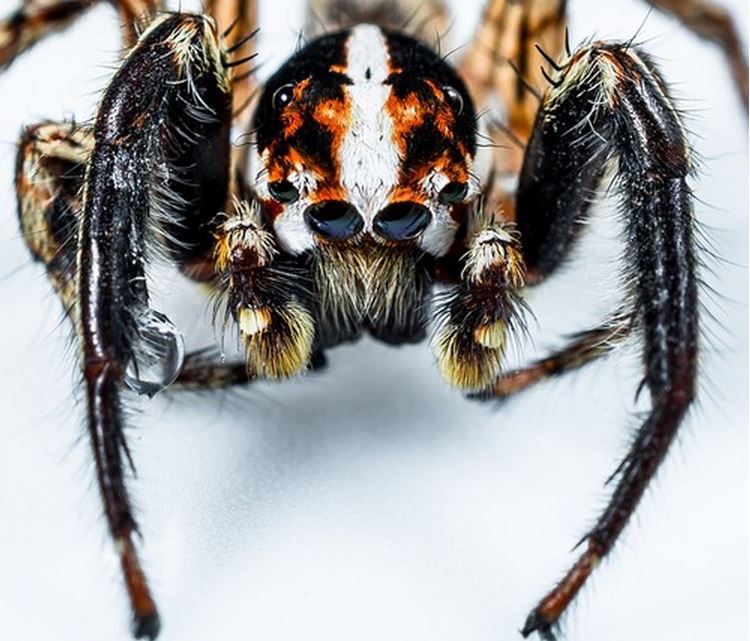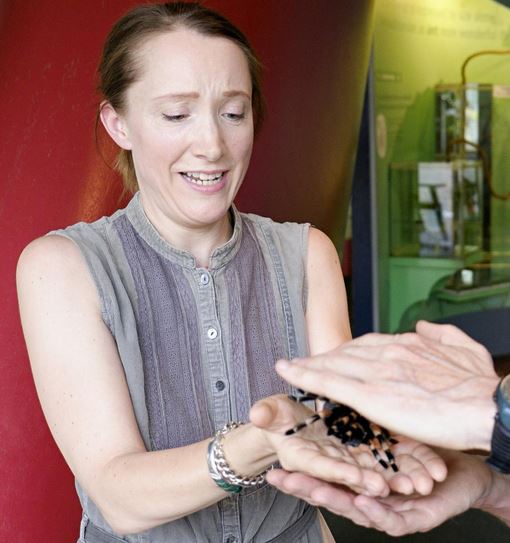A new study suggests that arachnophobia – a fear of spiders – is in our genes, i.e. it has become part of our DNA as a product of human evolution. The eight-legged arthropods presented such a major danger to humans during our evolution that we evolved an inherent fear of them.
Several experts disagree and insist that fear of spiders is the result of social conditioning.
Joshua New, assistant professor in the Psychology Department at Barnard College, part of Columbia University in New York, explains that in early human evolution in Africa, individuals able to identify spiders had better survival chances compared to their less wary peers.

Prof. New believes we are genetically programmed to be afraid of spiders. (Image: joshuanew.info)
In an interview with The Sunday Times, Prof. New said:
“A number of spider species with potent, vertebrate-specific venoms populated Africa long before hominoids… and have co-existed there for tens of millions of years.”
“Humans were at perennial, unpredictable and significant risk of encountering highly venomous spiders in their ancestral environments.”
“Even when not fatal, a black widow spider bite in the ancestral world could leave one incapacitated for days or even weeks, terribly exposed to dangers.”
In a study, Prof. New and Associate Professor Tamsin German, who works at the Psychological & Brain Sciences faculty in the University of California at Santa Barbara, tested how rapidly volunteers could spot a spider when presented with several other images at the same time.
They published their findings in the academic journal Evolution & Human Behavior (citation below).
Humans pick out spiders faster than other nasty things
The vast majority of the 252 participants recognized the spiders much faster than other images known to induce fear, such as needles and flies.
The Independent quotes Professor Jon May from Plymouth University in England, who suggested that certain spider features – angular and furry legs, dark colours and unpredictable movements – are what make the arachnids so unpleasant and fearsome to humans.

Prof. May believes arachnophobia is the result of social conditioning.
According to Professor May:
“Spiders just tick all these boxes, and like any phobia, when it builds up in someone’s mind they can become scared even seeing a picture.”
“We like bright-coloured butterflies and ladybirds, but spiders are dark coloured with long angular legs – and the shape and colour both have strong negative associations.”
“We are also very sensitive to seeing things moving out of the corner of our eye and immediately notice it, and insects move quickly and unpredictably.”
Prof. May believes arachnophobia is a result of social conditioning, and not as Professors New and German suggested, because we are genetically programmed that way.
Prof. May says children are likely to fear spiders if they see their parents and other adults in the household and at school reacting to the creatures in a certain way.
Prof. New concluded in his website:
“This ability (to spot spiders rapidly) was highly specific to stimuli which conformed to a spider “template”: participants were frequently inattentionally blind to scrambled versions of the spider stimuli, and to a modern threat (hypodermic needle), and even a different animal (housefly).”
“This demonstrates that some evolutionary-relevant threats are highly-specified and can evoke what is perhaps best termed ‘reflexive awareness’: an immediate and elaborated perception sufficient to guide an adaptive behavioral response.”
Citation: “Spiders at the cocktail party: an ancestral threat that surmounts inattentional blindness,” Joshua J. New and Tamsin C. German. Evolution & Human Behavior. DOI: 10.1016/j.evolhumbehav.2014.08.004.

